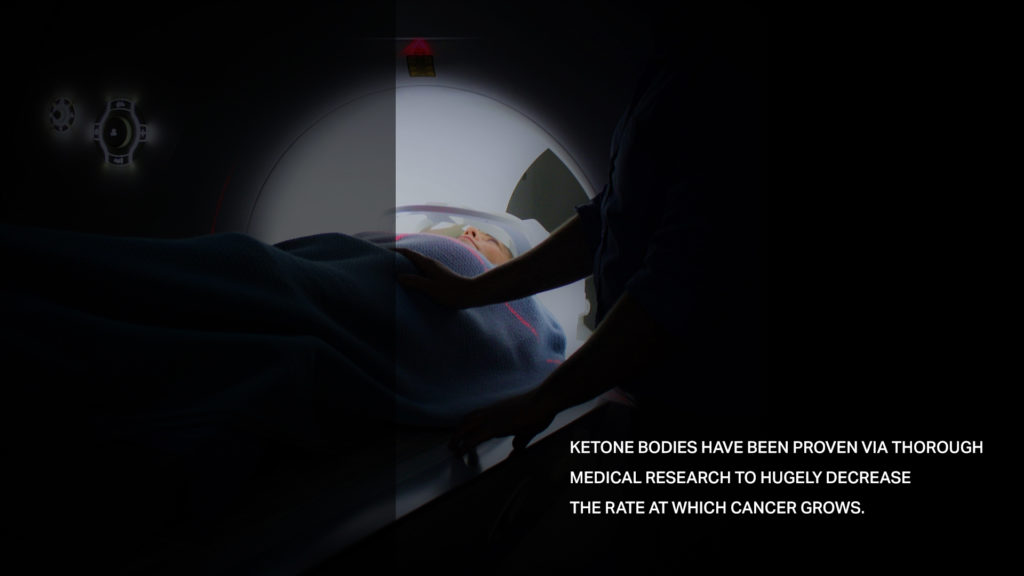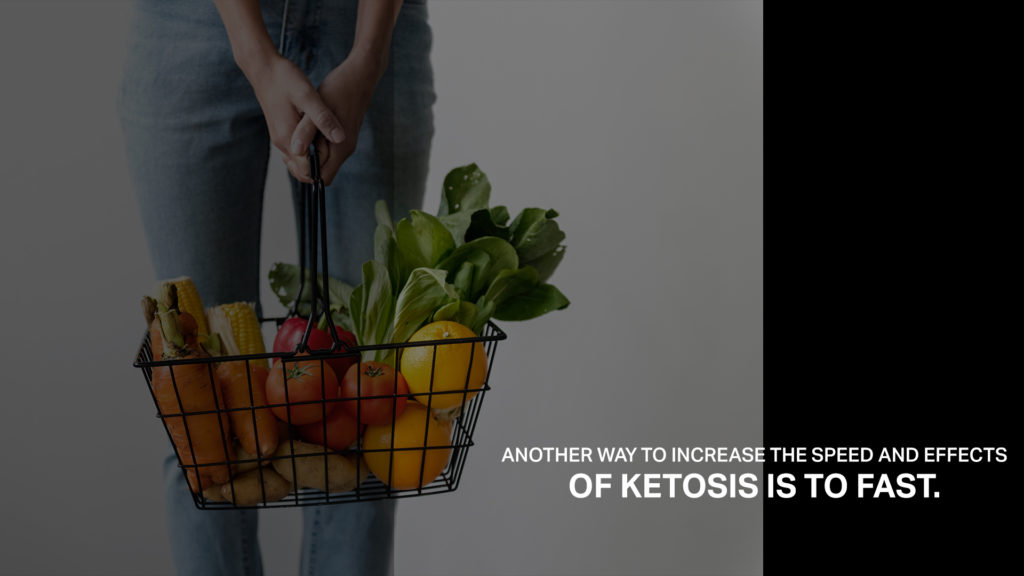Where Did the Ketogenic Diet Come From?
The ketogenic diet, also referred to more commonly as the keto diet, is almost a century old contrary to popular beliefs. Originally it was a diet formulated by Dr. Russell Wilder in 1924 to aid his patients suffering from stubborn epilepsy in their childhoods. He thought that if his patients were able to reach the metabolic state of ketosis, it would help the brain to function to act in its rightful capacity.
Table of Contents
What Is Ketosis?
Ketosis is a metabolic state which happens when ketones take over and become the primary energy source enabling the body and brain to function at their optimum.
What Is the Main Structure of the Keto Diet?
To put it at its most simplistic, the keto diet plan is a strict dieting regime that is fat intense, carbohydrate restricted while at the same time ensuring that ample protein is consumed, in a way that ensures that the body can still function. When the right balance of these three food groups occurs, the way in which your body consumes its energy alters. It is considered to be an effective dietary plan for epileptics needing to reduce the number of seizures they have, as well as being beneficial to diabetes because the diet also decreases the glucose level in the body aiding the body to become more insulin resistant.
The State Of Ketosis
The state of ketosis can be defined as being when the human body enters a metabolic state where ketones are changed from fat into an energy source for the body to burn and runoff. This is a different metabolic state to where the body usually gains its energy from carbohydrate conversion.
What Are Ketones?
To define this question, we must think like a biochemist would. Ketones are organic, carbon-based compounds. They have a central carbon atom which is double-bonded to an atom containing oxygen, along with a pair of carbon-containing related atoms which are simply known as “R.” It may sound somewhat complicated in its formation and biochemical jargon, but actually, it’s rather simple to get your mind wrapped around the concept.
Ketones and the Liver
Due to the fact that ketones do not contain any chemical groups that seen to be readily reactive, they are instead classed as being simple compounds. In order for fatty acids to be made into energy, the liver converts them. It is able to do so because the mitochondria of the liver produces three differing ketones:
- Acetone;
- Acetoacetic acid;
- Beta-hydroxybutyric acid.
All three of these ketones are needed at any one time for the production of energy. The liver oxidizes certain fatty acids to create energy for the body, leaving leftover fatty acids to be partially oxidized to create acetoacetate which later converts naturally into beta-hydroxybutyric acid. They are produced within the liver itself and are holistically known as endogenous ketone bodies. The opposite of these are called exogenous ketone bodies which are not created by the liver, but are instead congested naturally from certain foods. Even when the body is not in a state of ketosis, endogenous ketones are ready and waiting for use.
Keto Diet and Insulin
If you consume a meal that is low in carbohydrates when you are already on the keto diet, the amount of insulin decreases. This means that fatty acids escape from the body’s fat store and are burned instead to give you the energy you require to function.
As the levels of glucose reduce in the body, the lipase then releases triglycerides (a type of fatty acid) which are then oxidized by the liver and become ketones. These ketones are then used by all mitochondria containing tissues with the body, like your muscles and brain.
Ketones have a rare ability to be able to cross the barrier between blood and brain which allows them to give your brain energy even when there is no glucose to act as an energy source. The most common times that this occurs are during pregnancy, in childhood years, when fasting or during starvation. This is often mistaken as being a negative side effect but actually, for people with epilepsy, it is very effective at reducing the number of seizures, and for diabetics, it is effective at lowering the blood sugar. The side effect is weight loss, but not many people see this as a negative, especially when being overweight is often why diabetes (for example) can occur in the first place.
What happens if I eat carbs while in ketosis
How to Reach the Full State of Ketosis
- You must follow a very strict diet where you intake less than 50g of carbohydrates each day, as well as sometimes having to intake only 20g of carbs on other days.
- To achieve a full state of ketosis, you must have a strict meal plan, eradicating sweets, cookies, drinks, and desserts.
- Avoid eating foods that are rich in carbs like cereal, bread, potatoes, and rice.
- If you are undertaking a stricter keto diet, avoid pasta as well.
- Consume 60-70% of your daily calories through fats, 20-30% through protein, carbs should only be consumed if less than 50g daily.
- For someone consuming a standard “Western diet,” their blood ketone level is of 0.1-0.2 mmols.
 What Does the Right Keto Diet Look Like?
What Does the Right Keto Diet Look Like?
- 75% fats
- 20% protein
- 5% carbohydrates
This will enable your blood ketones to increase to anywhere between 0.5 and 5.0mmols, thus allowing you to reach “nutritional ketosis.”
Research
Some studies have proven that diets high in fat conclude in obesity, as well as large amounts of bad cholesterol leading to resistance in cardiovascular disease and a resistance to insulin.
However, if you follow the keto diet, it is not purely a high-fat diet, but it is actually a diet that is low in carbs as well. This is the most important thing to remember. If we look at a typical diet of high fat, high carbs, this is where the health problems lie.
Case Study
Research undertaken by Robert R. Wolfe showed that fat injected directly into the bloodstream was used as fuel and was not stored when a keto blood test was done to reveal the results.
During the same research, when the injection was altered to being fat and carbohydrates, it was found that the fat was unable to be converted into energy because of the presence of carbohydrates. This began the insulin resistance.
From this research, it was found that fats need the CPT1 enzyme so that they can be transported into cell mitochondria.
If levels of insulin are high, the mitochondria in cells prevent the transportation of fat and stop it from being oxidized. This is why the keto diet works. Through the small amounts of carbs allowed, the fats can be turned in to energy and are not restricted.
How to Undertake the Keto Diet
- Make sure you have a solid meal plan before you start – if not, you will not succeed on this diet;
- Remember that this diet is based on consumption calculation, so be sure to have done your research before you begin;
- Knowing which foods are keto based, what keto menus look like, understanding what the amounts of each food look like is how you will succeed with your keto goals;
Can You Answer the Following Keto Questions?
This is imperative before you begin your keto diet!
- Be specific – What goes into a ketone diet?
- What are the food groups that you can eat?
- What does a keto meal plan look like?
If you want to learn more or are currently unable to answer all of the above questions, keep reading.
The Food Groups of the Keto Diet
Changing your diet so that you can reach ketosis can be challenging, just as it can be with adjusting your eating habits to any new diet plan. To help this process and make it more simple and achievable for yourself, give yourself enough time to understand the keto diet before you begin. You must make sure that you have a diet plan that aids your personal needs and lifestyle. Your goal needs to be attainable.
An excellent example of making the keto diet personal is if you start out thinking that you are going to cook three keto meals every day, when you’ve always actually been more of a “quick fix” or “grab and go” type eater. For long term success, this would need to be adjusted or you will fail before you’ve even begun.
Whatever your lifestyle and previous habits, the keto diet can and will work for you so long as you personalize it.
Carbs to be Avoided
Take note: the fewer carbs you consume, the faster your body will be able to enter a full state of ketosis. But this isn’t suitable for everyone. You must be happy to make adjustments to your carb intake depending on your how your body responds to your new diet.
For example, some people can immediately handle consuming less than 15g of carbs each day as soon as they begin the keto diet. However, other people will need to decrease their carb level in a more gradual way while slowly increasing their fat intake, too.
It doesn’t matter how fast you decide to restrict your intake of carbs, there are only specific carb sources that you want to consume.
To successfully undertake the keto diet, consume the following carbs:
- Nuts
- Vegetables
- Dairy
You should not eat the following carbs to be successful on the keto diet:
- Grains, like corn and wheat
- Rice
- Sugar – this includes the majority of fruits, too
- Starchy vegetables – they are high in sugar
- Potatoes and yams
If a lot of vegetables are to be avoided, then which vegetables can you eat?
A vital part of all diets is the consumption of vegetables. When following the keto diet, you should be avoiding starchy vegetables and focusing on the following:
- Leafy greens – they are high in nutrients
- Vegetables that grow above the ground, like broccoli and cauliflower
Fruits You Can Eat
The majority of fruits should be avoided because they contain such a high sugar content. Avocado and berries are not to be consumed. But that does not mean that no fruit can be consumed at all. Instead, look at the glycaemic index of the fruit you are thinking about consuming. The lower the ranking, the more suitable it is for you to consume it.
Is Keto Restrictive?
Okay, so initially the keto diet does seem like it is rather restrictive when it comes to different foods, but there are actually more options that you might think. It is even possible to undertake the keto diet as a vegetarian and a vegan, but to the majority of diet adherents, meat is a significant factor.
There are lots of misconceptions and incorrect preconceived ideas about protein and low carb dieting. So let’s just set the facts straight before we go any further:
- Protein does not make you fat – it is a nutrient that enables you to build up your body and repair your muscles. If you want to enter ketosis, you must keep your protein intake moderated due to the process known as gluconeogenesis.
- Your primary energy source should be fat when you’re on the keto diet.
- If you consume too much protein, it (the protein) will be turned in to energy, not the fat. This defeats the entire purpose of undertaking the keto diet.
- If your body consumes all of its protein intake, it will start burning through your lean muscles to find the fuel and energy that it requires!
- If you take on high-fat quantities but the incorrect amount of protein, you will not reach the state of ketosis.
- Your body needs protein to operate at all.
 Vital Facts
Vital Facts
- Fat must be consumed on the keto diet and should be well incorporated.
- Natural fat sources are recommended, like meat and nuts.
- Saturated and monosaturated fat sources, such as butter, coconut oil, and olive oil are recommended for exogenous ketones to occur.
- It is convenient to increase the amount of fat you intake, e.g., coat your low starch vegetables in oil to increase the fat content, but it also makes them taste better.
- Lots of the permitted foods naturally pair well together.
- Mono-meals can be easy and convenient but be sure to add different ingredients to your meal once, if not twice each day.
- Multiple ingredient meals will fill you for longer, prevent cravings and taste wonderful. Try a salad, topped with a steak, drizzled in olive oil and finished with pecan nuts.
- Transitioning to keto can be challenging due to changing tastes – be sure to season your food. If you had a previous diet high in processed food, your body will be used to salt, so keto eating will feel very bland – your taste buds will adapt in just a couple of weeks though.
- Check the labels of spice blends, but you can use to spice to increase flavor profiles.
- You may crave certain foods when you begin the keto diet, even foods you never would dream of eating – don’t worry, stick with it, and this feeling will disappear after just a couple of weeks.
- If you need to add sweetness to your food or drinks, use natural, low carbohydrate sweeteners. Popular choices include stevia, erythritol, and monk fruit.
- If you are not ready or able to go full on keto due to diabetes, these sweeteners can be a great solution and big help.
- Overeating protein will not help your new diet or your body.
- Consume organic, grass-fed meat as often as possible for your protein source.
- It does not matter whether your leafy greens and keto-approved vegetables (grown above the ground), are fresh or frozen.
- Consume full-fat dairy products.
- Only eat seeds and nuts in moderate quantities.
- To make things as simple as possible, drink water as your beverage of choice. If you need some flavor, add lemon or lime.
Macros
Macros is the abbreviated word for macronutrients. These must be accounted for and counted continuously when you are on the keto diet. For the majority of keto dieters, the macro consumptions should look like this:
- Fats 70-75%
- Protein 15-20%
- Carbohydrates 5-10%
The world of macros is vast, but the above should aid you in keeping your new journey as simple as possible, encouraging you to use the keto diet as a means to your aesthetic success.
Keto Diet Benefits
There are lots of benefits to undertaking the keto diet:
- Your body can burn fat as fuel.
- Research has found that following a high carb diet is vital for consistent energy and endurance levels, but in 2004 Stephen D. Phinney discovered that this was not specific only to the keto diet, but to any high carb diet in general.
- Minerals and proteins are required daily to aid with the restricted carbs – this adds variety to your diet.
- You will not be restricted in your physical labor, recreation or athletic abilities using this diet.
- The body quickly becomes very efficient at turning fat into energy.
Do Not Participate In the Keto Diet If:
- You participate in anaerobic exercises like sprinting or weight lifting because the keto diet means that your muscle glycogen levels will be too low and will limit your performance and ability.
- You are a competitive athlete.
Ketones and Cancer

A change in diet will not stop cancerous cells from taking energy from the body via gluconeogenesis, but it will prevent the acceleration of growth.
When carbohydrate intake is decreased in a diet such as keto, the levels of insulin and IGF-1 are reduced within the blood. This means that cancerous cells receive less of the specific signals that they need to survive, develop and grow. Impressively, ketone bodies have been proven via thorough medical research to hugely decrease the rate at which cancer grows.
There have also been very positive case studies reported where patients with cancer have been put on to a ketogenic diet plan and a reduced carb intake. This regime has made the effects of treatment, and in many cases, the cure, highly evident. In these scenarios, cancerous tumors were stopped in their tracks because they become indolent. This means that the cancerous cells were not able to stand up to cancer treatment methods and therapeutic drugs.
Case studies showing that cancer is deterred by ketosis
- A 2012 case study was undertaken on 10 patients with advanced cancerous tumors. They all took part in a keto meal plan, including reduced carbohydrate intake for four weeks. There were positive outcomes, as 5 patients remained stable (their cancer did not spread) and 1 patient went it to partial remission. Less than half of the case study participants saw a progression of their cancer. It was found that the participants with the combination of highest ketones but lowest insulin levels saw the best results.
- A 2014 case study carried out by Bryan G. Allen also showed promising results. It was stated by Allen and his fellow researchers that “keto foods have been studied as an adjuvant to cancer therapy in both animal models and human case reports.”
- More recent research is not the only research to have found such positive results. In 1987, Tisdale et al. did a controlled study using mice that had the colon condition adenocarcinoma xenografts. They found that the colon tumors decreased drastically when the mice were transferred onto a keto diet food plan.
- There are further studies to support the evidence that keto diets help reduce the growth of various tumor types. In multiple differing animal species, colon, gastric, and prostate cancers, along with malignant glioma were prevented from spreading, as well as enabling better survival rates for the studied animals. From this evidence and other supporting research, it was hypothesized that ketosis can increase the radiation impact used in malignant glioma models and multiple non-small cell cancerous lung models.
- Another way to increase the speed and effects of ketosis is to fast. Fasting and the effects of fasting on patients with cancer have been studied, and was found that patients had better responses to chemotherapy and an increase in function of their healthy cells because they were in the state of ketosis. Rounds of fasting highlighted that tumors were retarded and then become more unstable to the process of chemotherapy – the chemo, in other words, was much more effective. In this study, two female pediatric patients with advanced tumors saw a 21.8% tumor decrease when they partook the keto diet. It was also founded that the keto diet aided with their insomnia and improved their emotional state.
- Further studies showed that after three months, 16 advanced stage cancer sufferers had their quality of life vastly improved when they used a keto diet. For five of these sufferers, the progression of their cancer was halted.
- In 2010, Robert Krikorian along with multiple others conducted a study that illustrated how the memories of patients with various kinds of mild cognitive impairments were improved through the use of the keto diet. 23 geriatric participants were used, and they were given either a very high carb diet or a very low carb diet, respectively, over six weeks. Participants in the low carbohydrate diet saw improvements in their verbal memory performance, making it clear that memory correlated directly with a participants level of ketones. It was also made evident that memory function could be improved with a low carb diet as well, even in participants at higher risk of getting Alzheimer’s. It helped them to lose weight, too.

- Portion control: once the body has become fully adapted to the new diet, the appetite will be suppressed leading to weight loss. The opposite of this is when a high carbohydrate diet is consumed, leading to higher hunger rates, increased appetite, and increase in weight. The majority of people who use the keto diet are wanting to lose weight;
- Increase in health and reduction in illness: the keto diet can reduce the risk of contracting heart disease because it reduces the number of triglycerides in the blood, the cholesterol, and HDL cholesterol;
- Helpful to diabetics: Sufferers of type 2 diabetes are able to increase their sensitivity to insulin through the use of the keto diet by up to an impressive 75%. There are even multiple reports of type 2 diabetics being able to cease the use of their insulin entirely;
- For people with Parkinson’s disease, the keto diet reduces triglycerides, decreasing the quantity of stomach fat, decreasing the blood pressure and improving symptoms of Parkinson’s disease itself;
- Speeds up the metabolism;
- Increases cognitive function and sharpens the memory;
- Improves energy levels;
- Enables a better, deeper and more refreshing night’s sleep;
- Better athletic performance;
- Lesser likelihood to get kidney stones.
What is the Desired Time Frame for the Ketogenic Diet?
This is one of the most frequently asked questions when it comes to ketogenic dieters, but it is a question that isn’t actually that simple to answer. It all depends on how long it takes an individual to reach a state of full ketosis.
However, it must also be clear that if you do not see any changes in your body or improvements to any symptoms that you must cease to use this diet method.
If the ketogenic diet user wants to use the diet to reduce the symptoms or frequency of seizures, many medical professionals would advise a period of anywhere up to three years.
In a study using obese patients with 35 kg extra or great BMI, high cholesterol, high glucose, and high blood glucose, the results over a six month period were very encouraging. All of the following results occurred:
- Loss of weight;
- Decreased BMI;
- Reduced amount of triglycerides;
- Reduced LDL cholesterol;
- Reduced blood glucose;
- Increased HDL cholesterol;
- Elevated levels of blood ketone levels;
- More alertness;
- Clearer mental focus;
- Increased drive and impetus to carry out activities.
It seemed only to take two weeks for these results to start becoming apparent. When the body reaches the state of keto-adaptation, this fat-conversion state burns fat and not protein to create energy for the body. The average amount of keto-adaptation occurring in a sixty minute period with the group of obesity patients was recorded at 30g per hour. This increased to 90g per hour after the body stayed in keto-adaptation state for just six weeks.
The state of ketosis and keto-adaptation does not happen immediately. A subjective amount of time must be given to the diet for the user to notice changes within their body. The cognitive speed and energy levels may be initially reduced when the keto diet begins, but this quickly changes as the body adjusts to the keto diet plan, enabling the dieter to gain as much mass and strength as they would have on an average high carbohydrate consumption diet.
If you would like to discover how long the state of ketosis can be endured by your body, then please read this article.
Products to Help with a Ketone Diet
There are multiple products readily available on the market to aid you with your keto diet and to help you keep on course. There are capsules, keto protein powders, oils and even drinks that have been specially produced to aid the ketogenic process. There is literally something for everyone, but you must be aware that some products and retailers are better, safer and more reputable than others. To help you choose products safely and easily, we have compiled a list of reputable sources for you to choose from, because seeking help from an alternative source is a risky and important decision.
Many brands of ketogenic aid products advertise that their products contain special, unique ingredients, but be aware that there are only four types of exogenous ketones that you can and should use and the most effective one for you is chosen by your own needs.
Please be aware that if you already have a high intake of protein in your diet, you do not want to use a product that has a high protein content.
Here is the list of recommended products that we have compiled for you. They have all been tested to assure you of their safety and positive effects, and they are as follows:
- Salts (BHB) – commonly found in natural foods like milk and eggs. The salts act in the same manner as acid, ensuring that ionic bonds bind to the base. When BHB is absorbed, it goes directly into the bloodstream where all of the individual chemicals are bound together and are later divided into the individual chemical because it is a solution of water-based substance.
- For 2019’s best BHB salts, click here.
- MCT oil – Fats are absorbed and travel straight to your liver. They are then able to create a thermogenic effect, increasing your metabolism. MCTs are burnt by the body acting as an energy source as opposed to being stored as fat.
- Discover the best MCT products by following this link.
- Fish oil – High levels of triglycerides are reduced in the blood during the consumption of fish oil. This is important because it helps the risk and likelihood of cardiovascular diseases from occurring.
- Sodium and Potassium – When you initially start a ketogenic diet your body expels all of its excess water and the sodium contained within the body. The naturally happens when the insulin levels decrease within the body. The majority of people consume more sodium than the body needs, so it is a positive thing that the sodium levels are reduced within the body, but they should be monitored closely to avoid a dangerous deficiency from occurring accidentally.
- Magnesium – Naturally stored in the bones and one of the most important nutritional sources in all bodies. When a ketogenic diet is undertaken, more ions are secreted by the human body. This can make us feel sluggish and, lethargic and suffer from cramps in the muscles. A blood test can make it clear to you whether or not a supplement would aid your keto diet.
- Vitamin D – This fat-soluble nutrient not only acts as a hormone but it also assists ketosis. Vitamin D is only produced naturally through exposure to sunlight, but it isn’t found in any food sources on the keto diet plan. For this reason, it must be supplemented. This is a vital element to add to your shopping list as it helps your body to be able to absorb calcium when the state of ketosis has been reached and keeps your immune system strong.
What Are the Side Effects of the Keto Diet?
With any diet plan, there are side effects, but this should not deter you from reaching the state of ketosis. It goes without saying that the larger the time you spend in the state of ketosis, the less the side effects will affect your body. Time dissipates symptoms.
Common side effects can include:
- The imbalance of electrolytes – your body will not retain water during ketosis, and you will need to urinate more frequently. You can test your urine with ketosis sticks.
- Increased urination when using BHB salts – but you will be able to retain your glycogen supplies. To help you, drink an electrolyte filled drink before and after taking any products.
- Halitosis – this occurs either when the liver converts energy from fat supplies, or if you are consuming exogenous ketones. Bad breath does not last long and can be solved through the use of mints, gum or mouthwash.
- Flatulence
- Hypoglycemia – when exogenous ketones are consumed, blood glucose levels can dip drastically, but it will not be severe enough for cold sweats to be endured. This is because the ketone levels will still remain at a decent level and will still have enough energy to support brain function. You will quickly become used to living your life to the fullest with low blood glucose levels.
- Constipation / diarrhea
- Tiredness
- Keto flu symptoms
- Cramps in muscles (most commonly the legs)
The side effects of vitamins/minerals are very minimal when compared with that of pharmaceutical medications, and none of them are temporary fixtures. All side effects can be easily managed but must be checked regularly.
Some side effects will only occur in the early stages of the ketogenic diet and will quickly dissipate. These short term effects include:
- Fatigue
- Low energy
- Nausea
Be sure to stick with the diet, battle through this short-lived negatives and focus on all of the positives that will come quickly once your body reaches ketosis.
Take a Look at the Results of Ketogenic Dieting
If you undertake the ketogenic diet in the right manner, you will be able to lose a significant amount of weight and decrease the likelihood of getting obesity-related health problems. For this to occur you must do the following:
- Train your body to burn any ingested fat;
- Train your body to burn the food you consume on a daily basis;
- Enable your body to use the food you consume as a ketogenic resource.
Be sure to keep track of your personal journey, perhaps by weighing yourself and taking measurements regular through your keto journey. This will be there as a source of encouragement if you are having a challenging day. Even more encouraging are before and after pictures if you are able to take them so that you can physically see the changes in your body over time.
Pictures are incredible. They allow us to see things that we perhaps cannot feel. We have been sent so many pictures of peoples’ journeys along their keto diets, and the changes are so impressive. So many lives have and continue to be changed forever through the use of keto dieting.
We continue to research, secure and test the latest ketosis products on the market so that you can thrive on your journey. We keep adding to our sources and information, so keep your eyes peeled.
Top Tips for Managing Your Keto Diet
When you decide to go on the keto diet, the number of changes that need to be made in order for you to reach the state of ketosis and start losing weight can seem somewhat overwhelming. Do not get stressed or panicked by this. The process will become second nature to you a lot quicker than you think. We want to help you on your way by giving you a list of top tricks and keto diet hacks so that life is a little easier for you.
1. Keep things simple
It won’t be long before you have gathered a wide array of delicious keto-friendly recipes and meal plans. They do not need to be 3 Michelin Starred for you to succeed. If you are new to keto dieting, do not be afraid of using the simple mono or poly-meals. Go easy on yourself. You can’t learn everything on the first day! Making things overly complicated will either make you fail or increase your desire to give up because you’ll get frustrated. We want to succeed on this journey so keep things simple.
2. Prep your meals in advance
To save yourself time and avoid unnecessary frustration, try planning and preparing your meals in bulk and/or in advance. Setting aside a few hours can ensure that you have the perfectly balanced keto friendly meals that you desire for the rest of the week. You can then have easy, readily prepared, grab and go meals with little fuss and effort. Easy!
For some people, the easiest, most time effective and financially rewarding method can be to cook chicken breasts and roasted vegetables for the whole week all in one go.
If batch cooking is not for you then why not try just making a bit extra of each meal you create and heating it up for lunch the next day. Saves time and you’ve had a great, well-balanced keto meal with no effort.
If you are not someone who can prep easily, then just make sure that you have a meal plan. Okay, it may not be as time effective but at least if you have a plan to stick to, which helps to avoid eating anything you shouldn’t. Avoid the late afternoon predicament of not knowing what you’re going to have for dinner. Assign specific foods for each day and meal of your week.
Alternatively, there are some people who are much more suited to convenience foods, like meal replacement smoothies and bars. It is helpful for you to know that there are keto friendly equivalents of these to help you, like smoothies, juices and protein powders. The most important thing to keep in mind when you are using keto-convenient food and to help you choose the best for your new lifestyle is to always read the list of ingredients. Taking a few minutes to do so will ensure that start to see the results of your keto diet.
The BIG Question: Does the Ketogenic Diet Work?
So we have given you an enormous amount of information about the ketogenic diet – should you wish to use it. We have tried to make it as evident as possible that there are large amounts of trusted research showing that the ketogenic diet is safe, effective and that it has no negative side effects for you to be concerned about.
For the majority of keto dieters and case study participants, the small and temporary side effects of the state of ketosis are hugely outweighed by the incredible benefits of partaking in a ketogenic lifestyle long term.
If you do not see any benefits appearing and positive changes occurring in your body when you have stuck to the ketogenic diet plan for a good length of time, there is no need to continue on your journey. Perhaps this just isn’t a lifestyle that is suited to you.
We have reviewed lots of ketogenic products for you on this site if you would like to give the keto diet a try. We guarantee that you will start to reap the rewards of your hard work in just a few weeks, and we assure you that you will have more energy, experience an increase in your brain function and cognitive retention, and last but not least, lose weight.
So, that’s it really. We have given you all the information that you need to successfully undertake the ketogenic diet plan and in a safe manner. If you have read all the way down to the end of this article, then you must be pretty serious about taking on this new challenge. If this is true, why not take a look at our top-rated brand to help you reach ketosis as quickly as possible. It’s called Perfect Keto.
Have a peek at our best ketogenic supplements reviews page so that you can make the most of your soon to be new lifestyle.
And, one final thing… good luck!
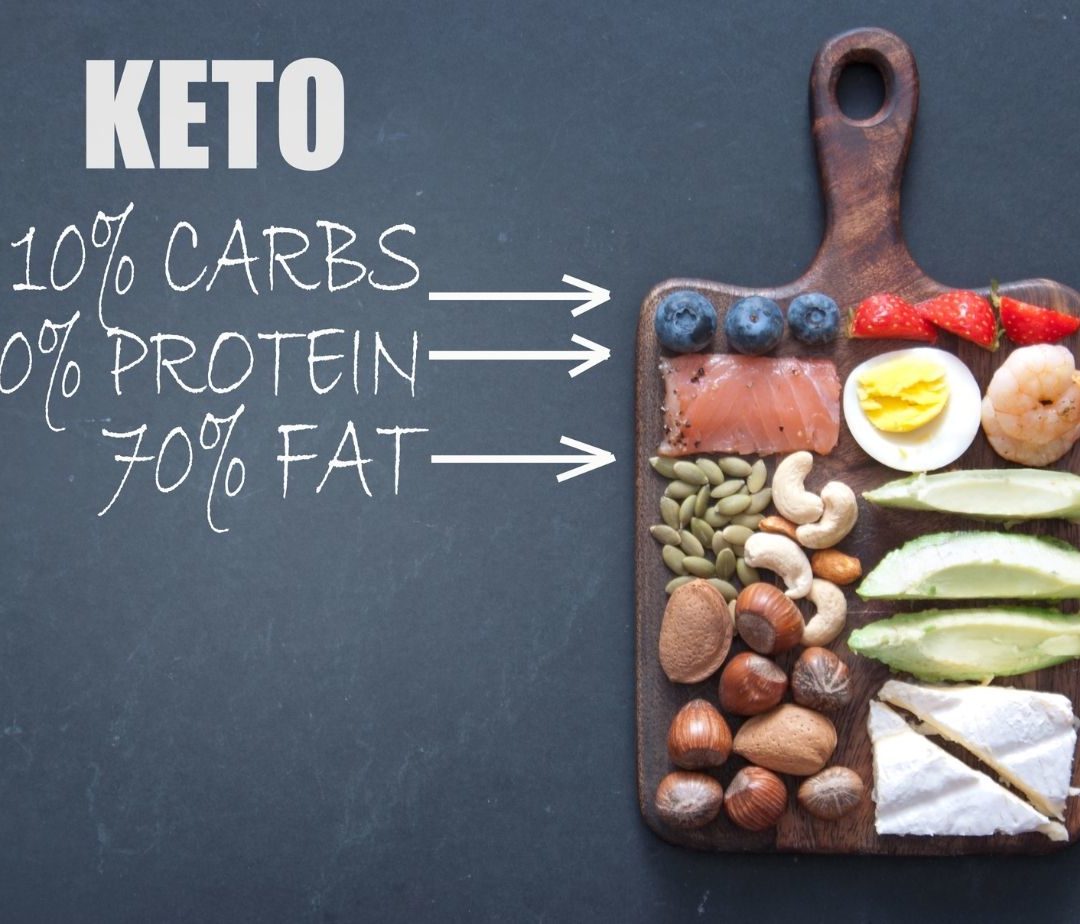
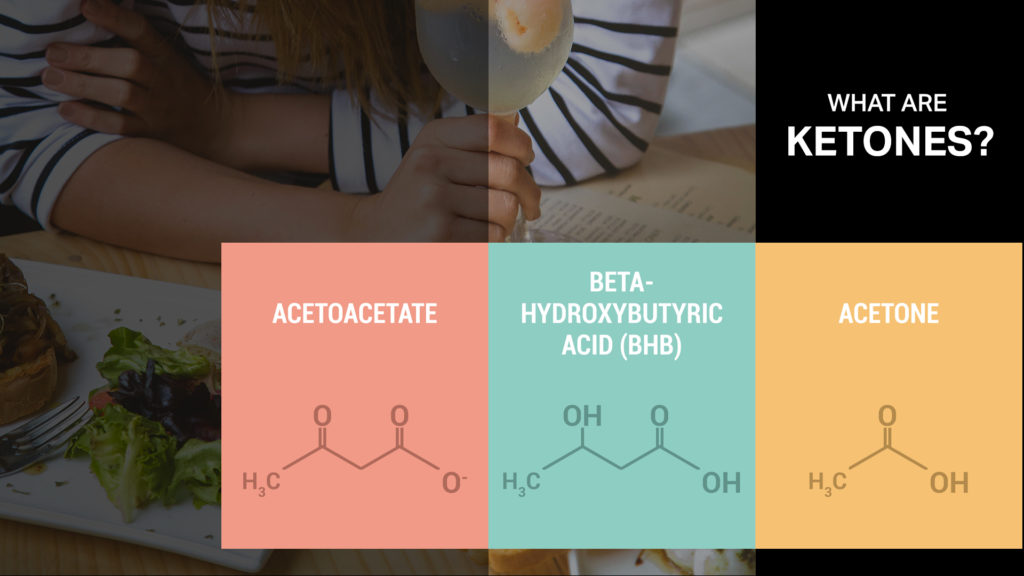
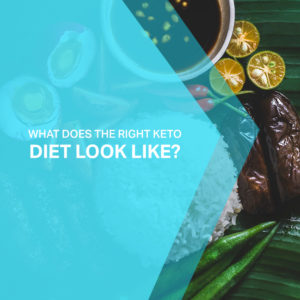 What Does the Right Keto Diet Look Like?
What Does the Right Keto Diet Look Like?
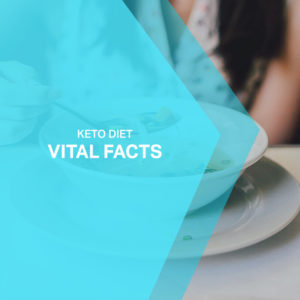 Vital Facts
Vital Facts